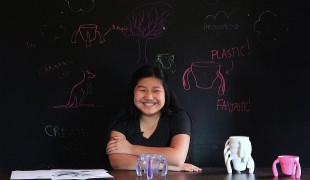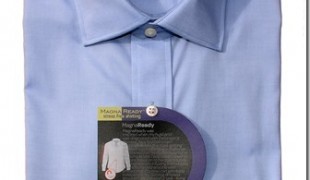- 3382
- 265
- 9
- 14
- 0
- Help Ukraine
About the solution
“I saw the immediate help I could provide to a friend. One of my football teammates, who is also my best friend’s brother, suffered a spinal injury a few years ago and he has been struggling to regain hand function ever since. One of the most memorable experiences, and a major motivation for this project, was when I went to give him a friendly handshake to say hello and all he could do was lift up his hand to offer a fist bump”, said Levy.
Carrying over from research done last summer on tenodesis motion, which uses the flex and extension of the wrist as a mechanism for moving and curling the fingers, Levy wanted to create a device that would help a user to pick up an object that they would not otherwise have the strength to grasp. In an interview with 3DPrint.com, Levy explained the approach to his design:
“Just by watching my wrist move up and down, I noticed that the distance between my forearm and first joint on my finger decreased as I lifted my wrist up. This got me thinking that maybe I could ‘push’ the fingers down with a rod attaching straight from my wrist to my fingers. I made a quick mock up in SolidWorks and printed it out within a few hours (oh the wonders of 3D printing!). After I proved my theory, I dove into the design.”
Levy established three parameters for his design: customizable, comfortable, and low profile.
This type of assistive prosthetic could be extremely helpful to anyone who is suffering from diminished mobility in their hands. Levy envisions those who have suffered from a stroke as being particularly aided by the use of a device such as his. Stroke victims or those who have suffered spinal injuries often heal from their torsos out. In other words, they regain movement in their shoulders first, then elbows, followed by wrists and last in their fingers. Many never recover full use of their fingers and it is exactly this issue that Levy hopes to address with his device, as he says: “there are two main uses for this design. The first is a functional use, where the device will enable a person to grasp an object they otherwise did not have the finger strength to pick up. The second is for at home rehabilitation use, where the person will wear the device and repeat the wrist motion many times over. This repetitive rehabilitation is based on the idea of neuroplasticity, where repetitive assisted motion will generate new connections in the brain and eventually allow the person to move their limbs unassisted.”
Adapted from: http://3dprint.com/83807/spiderhand-mobility-assist/
More info: http://supersam331.github.io/
https://www.youtube.com/watch?time_continue=7&v=LC2RJvZCflE
This solution shall not include mention to the use of drugs, chemicals or biologicals (including food); invasive devices; offensive, commercial or inherently dangerous content. This solution was not medically validated. Proceed with caution! If you have any doubts, please consult with a health professional.
DISCLAIMER: This story was written by someone who is not the author of the solution, therefore please be advised that, although it was written with the utmost respect for the innovation and the innovator, there can be some incorrect statements. If you find any errors please contact the patient Innovation team via info@patient-innovation.com
-
-
425
-
0
-
8844

Girl invents Kangaroo Cup – an anti-spill cup for her grandfather
CAREGIVING
Grip
Parkinson's Disease
Assistive Daily Life Device (to help ADL)
Vision problems
Tremors
Stiffness or rigidity (difficulty moving)
Muscle weakness
Trouble with fine motor skills (e.g., writing, buttoning clothes)
Sensory disturbances (e.g., hypersensitivity to touch, temperature changes)
Rehabilitating After Stroke
Promoting inclusivity and social integration
Preventing (Vaccination, Protection, Falls, Research/Mapping)
Raise awareness
Caregiving Support
Neurology
Physical Medicine and Rehabilitation
United States
-
-
-
210
-
0
-
2586

College students invent device to help stroke patient hug his grandchildren
COMMUNICATION: Communicating, whether by speaking, listening, or other means
CAREGIVING
Brain Stroke
Body-Worn solutions (Clothing, accessories, shoes, sensors...)
Restoring mobility
Rehabilitating After Stroke
Building Supportive Community Relationships
Promoting inclusivity and social integration
Raise awareness
General and Family Medicine
Physical Medicine and Rehabilitation
Vascular Surgery
United States
-
-
-
630
-
0
-
11841

MagnaReady® - adaptative clothing for people who struggle with fine motor skills
Grip
CAREGIVING
Parkinson's Disease
Body-Worn solutions (Clothing, accessories, shoes, sensors...)
Assistive Daily Life Device (to help ADL)
Tremors
Stiffness or rigidity (difficulty moving)
Trouble with fine motor skills (e.g., writing, buttoning clothes)
Promoting self-management
Managing Neurological Disorders
Promoting inclusivity and social integration
Caregiving Support
Internal Medicine
Neurology
Physical Medicine and Rehabilitation
Rheumatology
United States
-
 en
en